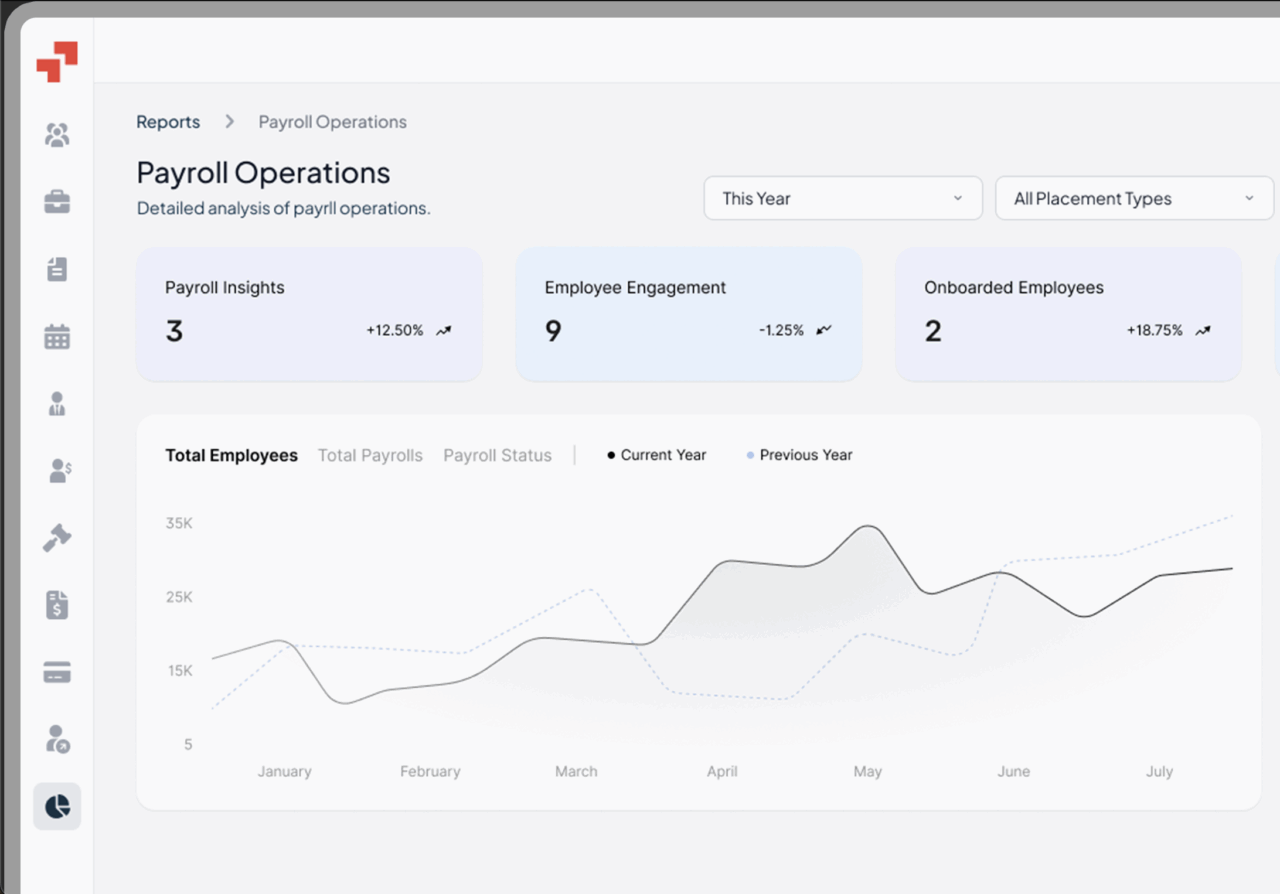Global Workforce GlossaryCo-employment
Related Terms
Employer of Record
Global PEO
Agent of Record
Global Employment Organization (GEO)
Employee Leasing
Co-employment often comes into play when businesses collaborate with staffing firms or professional employer organizations (PEOs). It allows companies to share responsibilities for payroll, compliance, and employee benefits. Navigating co-employment effectively can help businesses stay compliant while focusing on growth.
Table of Contents
- What is co-employment?
- What are co-employment laws?
- Why is co-employment a risk?
- What are co-employment rules
- Co-employment do’s and don’ts
- How does co-employment work?
- What is the difference between co-employment and joint employment?
- Co-employment vs PEO
- Co-employment vs employee leasing
- Is co-op considered a full-time employee?
- Is it illegal to work for two jobs in the same industry?
- Co-employment examples
- Practical Case Study Example
- PamGro and Co-employment: Your Global Partner
What is co-employment?
Co-employment is a legal arrangement where two employers share responsibility for the same employee.
Typically, one is the primary employer (the business) and the other is a co-employer such as a Professional Employer Organization (PEO). The employee works day-to-day for the company, but the co-employer handles HR, payroll, benefits, and compliance.
In practice, a co employment arrangement helps businesses reduce administrative tasks and burdens while clarifying employer responsibilities and giving employees access to benefits that smaller employers might not otherwise provide. It’s widely used in the U.S. through PEOs, staffing agencies, or joint ventures. For global companies, understanding co-employment relationships is essential to avoid compliance risks when hiring across states or countries.
In today’s workplace, co-employment also plays a role in gig and remote hiring models, where businesses want flexibility without losing compliance. It allows employers to stay lean while offering employees the same protections and benefits as traditional hires.
What are co-employment laws?
Co-employment laws in the U.S. define how responsibilities are split between the employer of record and the worksite employer. Regulations are governed primarily by the Department of Labor (DOL), the IRS, and state employment agencies. These laws cover tax withholding, benefits, workers’ compensation, and liability for wrongful termination.
Employers must ensure compliance with the Fair Labor Standards Act (FLSA), Family and Medical Leave Act (FMLA), and anti-discrimination laws. A mistake by either co-employer such as misclassification or benefits denial can create shared liability. That’s why companies partnering with PEOs or staffing firms must confirm the provider is IRS-certified and follows co-employment laws strictly.
Why is co-employment a risk?
Co-employment carries risks because both employers may be held legally accountable for the same employee. For example, if an employee claims unpaid overtime, both the company and the co-employment partner could be held responsible and sued. Similarly, disputes about benefits, workplace safety, or wrongful termination can trigger dual liability.
Another risk is employee misclassification. If the IRS or state labor agency determines an employee was treated incorrectly, both employers share tax penalties. This is why selecting the right co-employment partner or partnering company is critical trusted providers minimize risk by managing compliance, payroll accuracy, and benefits administration properly.
Another overlooked risk is cultural misalignment when employees are unsure who to turn to for HR issues. Clear communication channels and well-defined policies help prevent confusion and protect company culture in co-employment settings
What are the co-employment rules?
The rules of co-employment dictate that while employees perform their duties under the client company, HR and compliance responsibilities are shared with the co-employer. The client company manages daily operations and performance management, while the co-employer oversees payroll, tax filings, benefits, and legal compliance.
IRS and state rules require the co-employment partner to remit employment taxes and file W-2s. Companies must also comply with Equal Employment Opportunity Commission (EEOC) rules to avoid discrimination. Understanding these rules is key to ensuring that independent contractors get proper protections while businesses avoid penalties.
What are the co-employment do’s and don’ts?
When entering a co-employment relationship, employers should follow specific best practices. Do:
- Choose a reputable, certified co-employer.
- Clearly define responsibilities in the service agreement.
- Ensure compliance with tax and labor laws.
Don’t:
- Assume the co-employer eliminates all risks.
- Overlook employee communication staff should understand who manages payroll and benefits.
- Ignore ongoing audits or compliance reviews.
By following these do’s and don’ts, business leaders can enjoy the benefits of co-employment while also taking steps to mitigate risks.
How does co-employment work?
In co-employment, the employee technically works for both the client company and the co-employer. The client directs job tasks, sets performance goals, and manages the work environment. Meanwhile, the co-employer manages payroll, tax compliance, benefits, and HR policies.
For example, if a U.S. startup uses a PEO, the employee signs hiring paperwork under both the startup and the PEO. On payday, the employee receives wages and benefits through the PEO, but daily reporting still goes to the startup manager. This structure ensures compliance while letting the startup focus on growth
What is the difference between co-employment and joint employment?
Though often confused, co-employment and joint employment are not the same. Co-employment is a voluntary partnership, usually involving a PEO or staffing agency, where responsibilities are clearly split. Joint employment, on the other hand, occurs when two businesses both control the employee’s work without a formal arrangement often leading to disputes.
The Department of Labor defines joint employment as situations where two companies share control, such as franchisors and franchisees. Co-employment is generally safer and more structured, while joint employment can create unexpected liabilities. Businesses must distinguish between the two to avoid compliance pitfalls.
Co-employment vs PEO: What’s the difference?
A PEO is a specific type of co-employer. When a company engages a PEO, the co-employment arrangement begins. The business maintains control over operations, while the PEO handles payroll, benefits, workers’ compensation, and HR compliance.
While co-employment is the general concept, a PEO is the most common provider. Partnering with a PEO gives small to mid-sized businesses access to Fortune 500-level benefits and HR infrastructure without building it themselves. The PEO becomes the co-employer of record, reducing administrative burden and ensuring compliance.
What is the difference between co-employment and employee leasing?
Employee leasing and co-employment are related but not identical. In employee leasing, workers are technically employed by the leasing company and “rented” to the client business. This model is less common today.
Co-employment, by contrast, involves ongoing shared responsibility. The employee is not rented but is part of a long-term employment relationship where both the business and the co-employer share obligations. Most modern PEOs operate under co-employment rather than an employee leasing firm, as it provides more stability and better employee benefits.
Is co-op considered a full-time employee?
A co-op student (cooperative education program participant) is not automatically considered a full-time employee. Co-op programs are typically structured as temporary, experiential learning opportunities, often tied to university programs. However, if a co-op works full-time hours and receives employee benefits, they may qualify as full-time under labor laws.
Employers should clarify the status of co-op workers to avoid misclassification issues. If treated as part-time or temporary, co-ops are generally not entitled to full employee benefits. Correct classification helps businesses remain compliant and transparent with co-op participants.
Is it illegal to work for two jobs in the same industry?
In the U.S., it’s not illegal to hold two jobs in the same industry unless it violates a non-compete agreement, creates a conflict of interest, or involves misuse of confidential information. Employment laws don’t prohibit dual employment, but employers may set internal rules.
Employees should review contracts carefully before taking a second role. For employers, transparency and well-drafted employment agreements help prevent disputes. In co-employment arrangements, policies may vary for temporary workers depending on the co-employer’s HR rules and benefit eligibility requirements.
Example of Co-Employment
A common example of co-employment is a startup that partners with a PEO. The startup manages the employee’s role as a software engineer, while the PEO provides payroll, tax filing, and health insurance. Both share legal responsibilities for compliance.
Another example is a staffing agency that places temporary employees. The staffing agency acts as the employer of record for payroll and benefits, while the client company directs day-to-day work. These examples show how co-employment enables flexibility and compliance while supporting business growth.
Practical Case Study on Co-Employment
Imagine a 50-person SaaS startup in California planning rapid expansion into new states. Instead of setting up multiple legal entities and HR systems, the company partners with a co-employment provider. The PEO handles payroll tax compliance across state lines, negotiates competitive health insurance, and ensures FMLA compliance.
This arrangement saves the startup significant time and costs while protecting against compliance errors. Employees enjoy better benefits and consistent HR policies, which improves retention. For the startup’s founders, co-employment eliminates legal headaches and lets them focus on scaling product development and sales.
PamGro and Co-employment: Your Global Partner
Co-employment can solve HR challenges but also introduces risks if not managed properly. PamGro helps businesses go beyond traditional U.S. co-employment by offering global Employer of Record (EOR) services. Unlike standard co-employment, PamGro enables you to hire international talent without opening foreign entities while we handle payroll, compliance, taxes, and benefits.
Whether you’re scaling a SaaS startup or a multinational enterprise, PamGro ensures compliance across jurisdictions while giving employees access to best-in-class benefits. Partner with PamGro to expand confidently, hire globally, and reduce the risks of co-employment with a trusted EOR partner.
Hire the Best Talent, Anywhere






